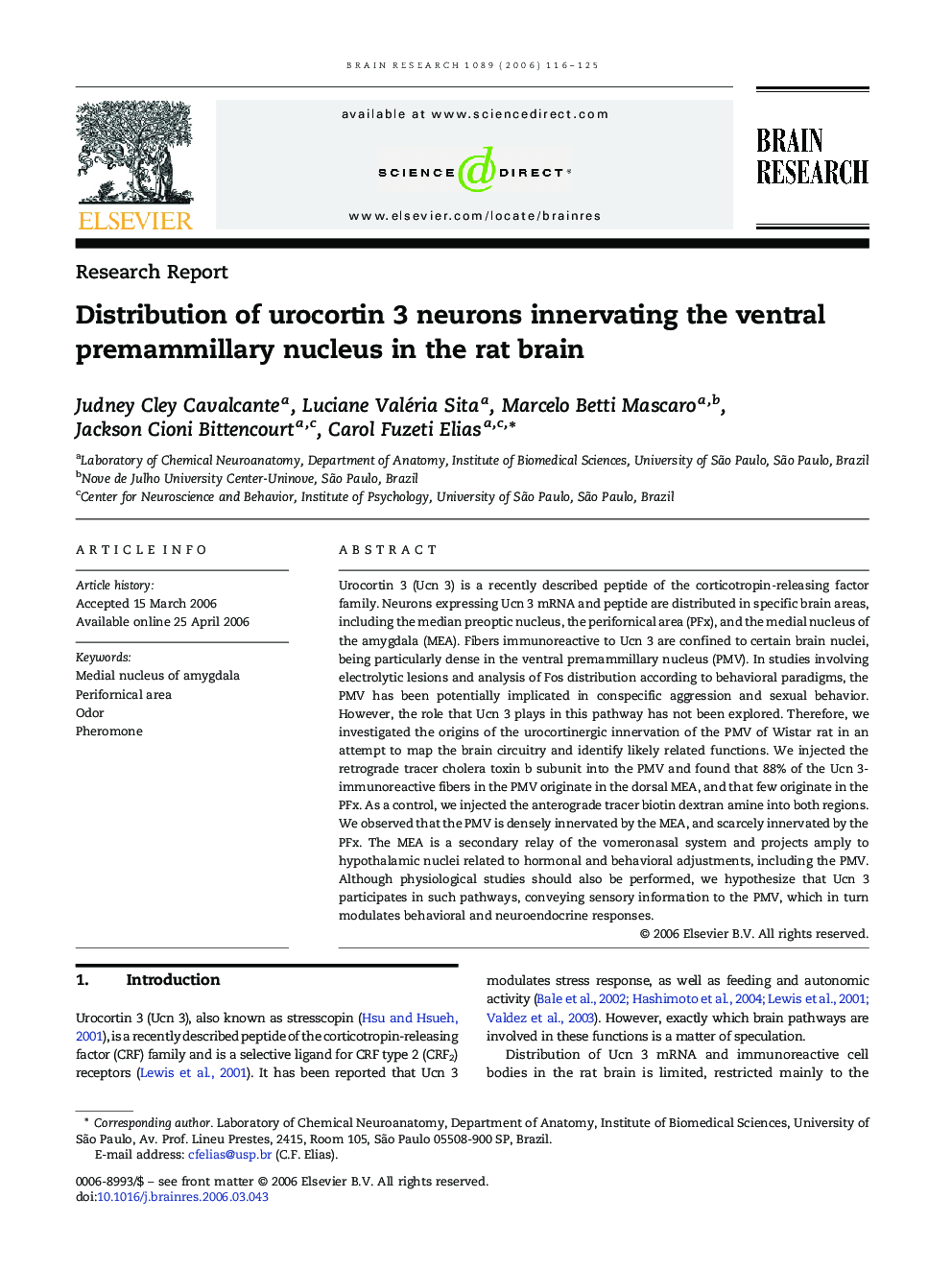| Article ID | Journal | Published Year | Pages | File Type |
|---|---|---|---|---|
| 4332961 | Brain Research | 2006 | 10 Pages |
Abstract
Urocortin 3 (Ucn 3) is a recently described peptide of the corticotropin-releasing factor family. Neurons expressing Ucn 3 mRNA and peptide are distributed in specific brain areas, including the median preoptic nucleus, the perifornical area (PFx), and the medial nucleus of the amygdala (MEA). Fibers immunoreactive to Ucn 3 are confined to certain brain nuclei, being particularly dense in the ventral premammillary nucleus (PMV). In studies involving electrolytic lesions and analysis of Fos distribution according to behavioral paradigms, the PMV has been potentially implicated in conspecific aggression and sexual behavior. However, the role that Ucn 3 plays in this pathway has not been explored. Therefore, we investigated the origins of the urocortinergic innervation of the PMV of Wistar rat in an attempt to map the brain circuitry and identify likely related functions. We injected the retrograde tracer cholera toxin b subunit into the PMV and found that 88% of the Ucn 3-immunoreactive fibers in the PMV originate in the dorsal MEA, and that few originate in the PFx. As a control, we injected the anterograde tracer biotin dextran amine into both regions. We observed that the PMV is densely innervated by the MEA, and scarcely innervated by the PFx. The MEA is a secondary relay of the vomeronasal system and projects amply to hypothalamic nuclei related to hormonal and behavioral adjustments, including the PMV. Although physiological studies should also be performed, we hypothesize that Ucn 3 participates in such pathways, conveying sensory information to the PMV, which in turn modulates behavioral and neuroendocrine responses.
Related Topics
Life Sciences
Neuroscience
Neuroscience (General)
Authors
Judney Cley Cavalcante, Luciane Valéria Sita, Marcelo Betti Mascaro, Jackson Cioni Bittencourt, Carol Fuzeti Elias,
